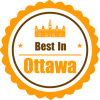The Short Answer: Yes.
While it’s rare to build actual muscle tissue “too fast,” it is extremely common to progress a workout too quickly—and this is one of the main reasons people get injured and end up in our clinic.
Here’s the problem our physios see every day:
Your muscles adapt to new challenges relatively quickly. But your tendons, ligaments, and joints (your connective tissues) adapt much, much more slowly.
“Building muscle too fast” often means you’re creating a “gap” between your muscle strength and your connective tissue’s resilience. This gap is where injuries happen:
- Tendonitis: a common musculoskeletal condition characterized by inflammation of a tendon, the thick, fibrous cords that attach muscle to bone. This inflammation is typically an acute, short-term response to injury, most often caused by overuse or repetitive strain from activities in sports, work, or hobbies, such as the repeated forceful grip in Tennis Elbow (lateral epicondylitis) or the constant jumping motion in Jumper’s Knee (patellar tendinitis). Symptoms generally occur where the tendon meets the bone and include localized pain, a dull ache that worsens with movement, tenderness to the touch, and often mild swelling or warmth.
- Ligament sprains: common injuries that occur when the ligaments are either stretched or torn. They are typically caused by trauma that forces a joint outside of its normal range of motion, such as a sudden twist or fall, with the ankle being the most frequently affected joint. Sprains are categorized into three grades based on severity: Grade I (Mild), involving microscopic stretching without joint instability; Grade II (Moderate), which is a partial tear with some looseness in the joint; and Grade III (Severe), representing a complete tear that causes significant pain, swelling, bruising, and substantial joint instability.
- Joint inflammation: commonly referred to as arthritis, is a localized inflammatory response that occurs within a joint. It is characterized by the body’s immune system attacking or irritating the tissues within the joint capsule, primarily the synovium (the membrane lining the joint). This inflammation leads to the cardinal symptoms of arthritis: pain, stiffness, swelling, redness over the joint, and a loss of function or range of motion. Joint inflammation can be caused by various factors.
- Muscle strains and tears: occur when the muscle fibers or the attached tendons are overstretched or torn due to excessive force or overexertion, particularly when the muscle is already fatigued or hasn’t been properly warmed up. These injuries are common in muscles that cross two joints, like the hamstrings, or in the back and shoulder, and are graded by severity: Grade I (mild strain) involves microscopic tearing with pain but full function; Grade II (moderate strain) is a partial tear with pain, swelling, and reduced function; and Grade III (severe tear) is a complete rupture of the muscle or tendon requiring significant recovery and sometimes surgery.
A Physio’s Takeaway: Building lasting, functional strength isn’t a race. The goal is to get stronger without getting sidelined. True progress is measured in months and years, not days and weeks.
Focus on perfecting your form and gradual progressive overload. If you’re ever in doubt, a physiotherapist can help you build a strength plan that is both safe and effective for your body and goals.







